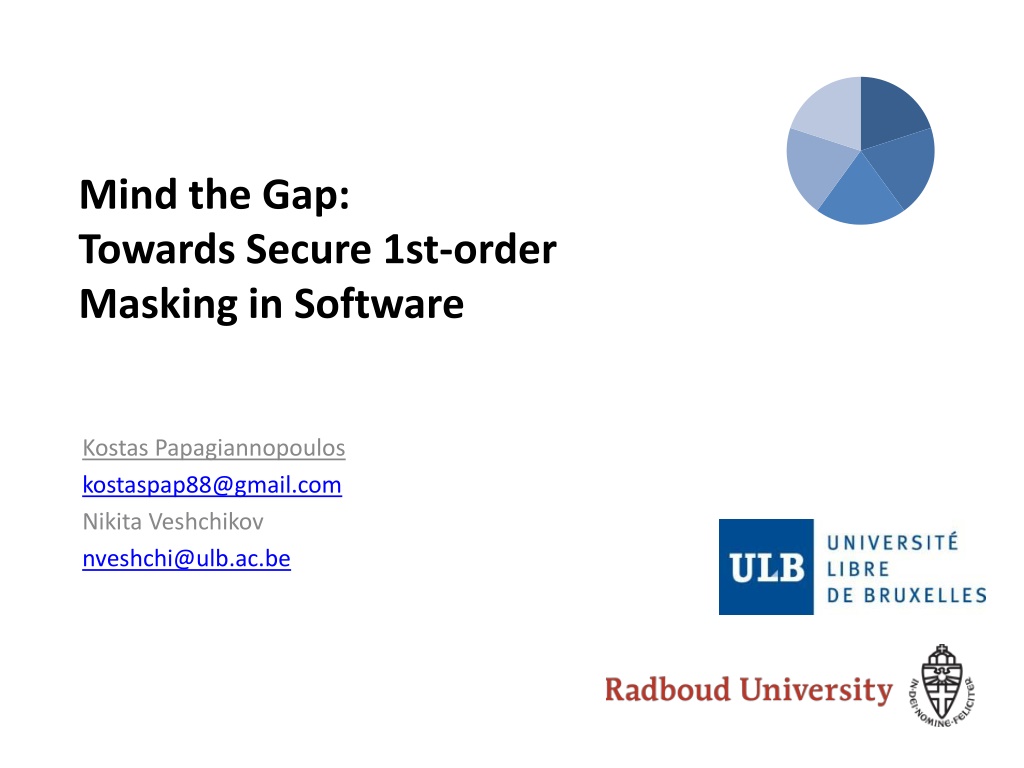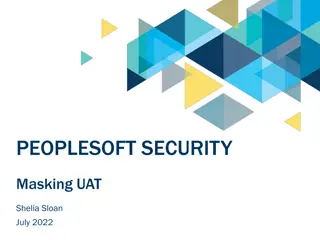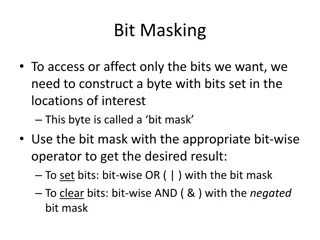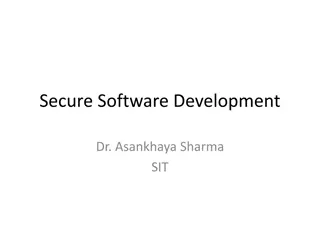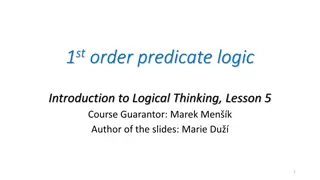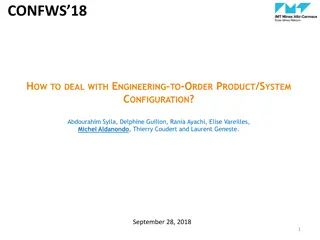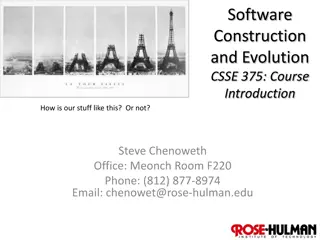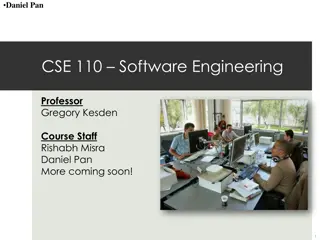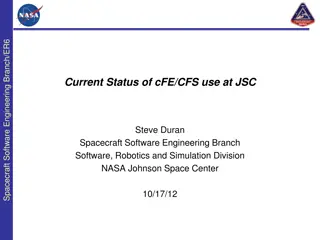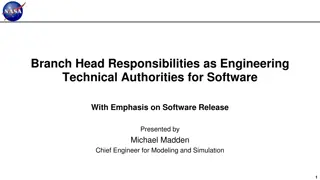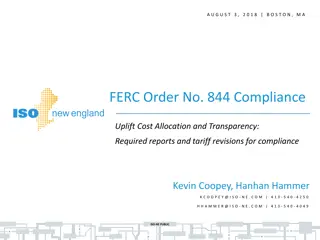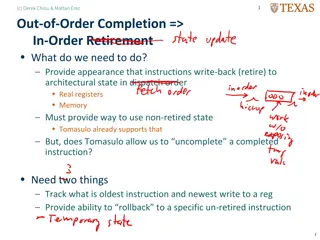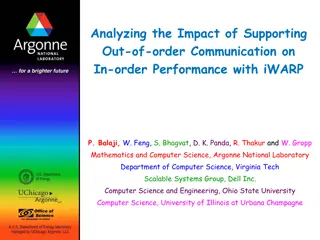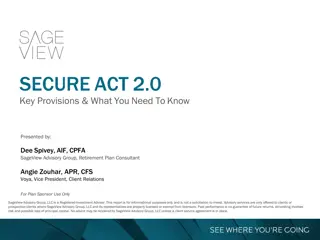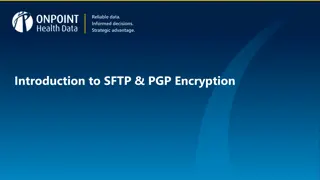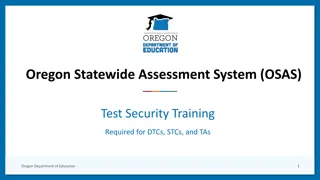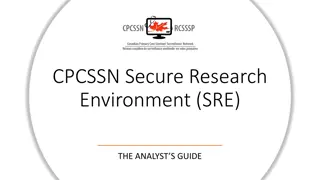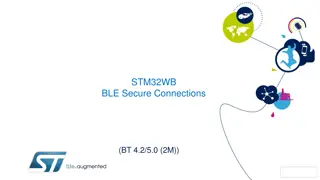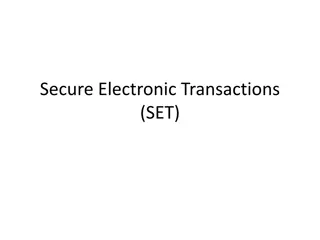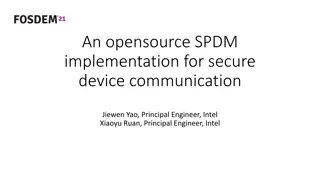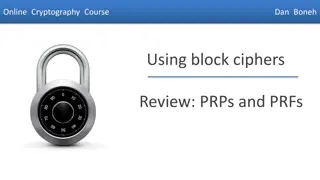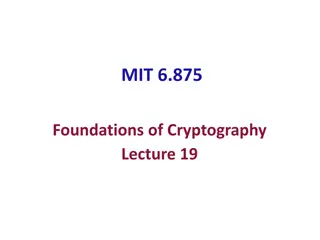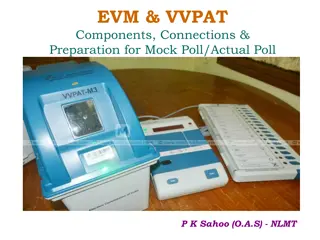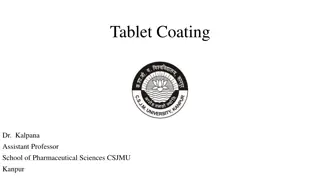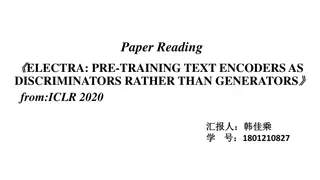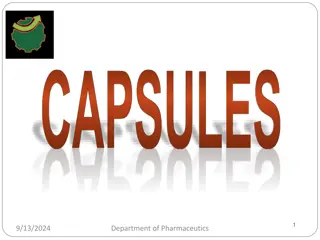Secure 1st-Order Masking in Software
Towards implementing secure 1st-order Boolean masking schemes to resist univariate attacks in software, exploring theories, practices, and ILA-breaching effects on security. Emphasizing the importance of verifying masking efficacy under leakage assumptions and discussing the impact of distance-based leakages on security levels.
Download Presentation

Please find below an Image/Link to download the presentation.
The content on the website is provided AS IS for your information and personal use only. It may not be sold, licensed, or shared on other websites without obtaining consent from the author. Download presentation by click this link. If you encounter any issues during the download, it is possible that the publisher has removed the file from their server.
E N D
Presentation Transcript
Mind the Gap: Towards Secure 1st-order Masking in Software Kostas Papagiannopoulos kostaspap88@gmail.com Nikita Veshchikov nveshchi@ulb.ac.be
1 Software Masking Theory and Practice
Software Masking: Theory Crypto Primitive: Key-dependent values Implementation: Device + Leakage function Side-Channel: Physical observables + Exploitation
Software Masking: Theory Masking countermeasures use secret sharing techniques to split v????? ? into several shares ? (??,??,??, ,??) Recovering ? requires ?0,?1,?2, ,??, since ? = ?? ?? ?? ?? A ?-order scheme can be compromised using an attack of order ? + ?, yet the required traces increase exponentially w.r.t. to ? #?????? ??+4????/???? [Chari et al., Towards Sound Approaches to Counteract Power-Analysis Attacks]
Software Masking: Practice Masking is a provably secure countermeasure, why do we need to check? Masking works perfectly under the independent, value-based leakage assumption (ILA) The presence of ILA-breaching effects such as distance-based leakages can reduce the security order Order Reduction Theorem: A ?? order masking scheme will reduce to order ?????(? of distance-based leakages 2) , in the presence Confirmed experimentally in AVR ATMega/XMega, 8051, ARM Cortex M4 architectures for ? = 1,2 [Balasch et al., On the cost of lazy engineering for masked software implementations]
Software Masking: Goal Can we implement a 1st-order Boolean masking scheme that can resist 1st-order univariate attacks? What is the price?
2 ILA-Breaching Effects Security hazards on ATMega163: Origin and Solutions
Overwrite Effect r17 x0 1 ; share x0 in r17 2 ; share x1 in r23 3 mov r17 , r23 r17 x1 #???????? ~ ?0 ?1 ~ ?
Overwrite Effect 1 ; share x0 in r17 2 ; share x1 in r23 3 mov r17 , r23 Already observed and analyzed in registers [Keccak team, Note on side-channel attacks and their countermeasures] [Coron et al., Conversion of security proofs from one leakage model to another] We also detect that SRAM memory overwrites can breach ILA Can be solved by clearing the registers or memory
Memory Remnant Effect SRAM Memory 1 ; share x0 in 0x0080 2 ; share x1 in 0x0090 3 ldi r27 , 0x00 4 ldi r26 , 0x80 5 ld r17 , X 6 ldi r27 , 0x00 7 ldi r26 , 0x90 8 ld r20 , X 0080 : x0 0090 : x1 Pipeline x1 x0 ALU x0
Memory Remnant Effect 1 ; share x0 in 0x0080 2 ; share x1 in 0x0090 3 ldi r27 , 0x00 4 ldi r26 , 0x80 5 ld r17 , X 6 ldi r27 , 0x00 7 ldi r26 , 0x90 8 ld r20 , X Can be solved by dummy memory accesses or avoiding consecutive accesses to the same family of shares
Neighbour Leakage Effect Register file, theory r0 r1 r2 r3 1 ; share x0 in r3 2 mov r2 , r2 3 nop ; 5 times 4 mov r3 , r3 Register file, practice r0 r1 r2 r3 The effect s origin is less clear Multiplexers activate more than one register Lack of physical separation in the architecture Hidden registers Linking leakage effects to architectural choices is non-trivial
Neighbour Leakage Effect Correlation with x0 1 ; share x0 in r2 2 mov r2 , r2 3 nop ; 5 times 4 mov r3 , r3 We analyzed the whole register file Can be solved by avoiding certain registers e.g. r0 Keep shares at a distance in the register file
3 ASCOLD Detection Tool Assembly-oriented code checking
ASCOLD Tool ASsembly COde Leakage Detection Open-source tool that parses AVR assembly and detects potential threats Every storage unit (register, memory position) keeps track of the mask shares and random numbers that are stored in it SRAM Memory 0080 : x0, y1, t0 0090 : x1, t1 00a0 : rand_1
ASCOLD Tool Any operation that combines more than a single share of the same family will raise an alarm Only specified instructions can clean the track of a storage unit (e.g. re-randomization) Assembly-oriented so device-dependent ILA-breaching effects can be easily integrated as extra rules Limited to 1st-order masking schemes, under safe re-randomization and uses a conservative approach Offers an assembly-oriented analysis, complementary to formal verification tools [Barthe et al., Verified proofs of higher-order masking]
4 Hardened Sbox & Evaluation Secure 1st-order masked implementations
Sbox Implementation Create a 1st-order implementation without ILA-breaching effects Assembly-based implementation of RECTANGLE Sbox for AVR ATMega163 Optimized bitsliced implementation with minimum multiplicative complexity [Grosso et al., LS-Designs: Bitslice Encryption for Efficient Masked Software Implementations] 1st -order ISW masking, securing 4 non-linear operations per Sbox iteration Version 1: Standard non-hardened 1st-order, without ILA enforcement Version 2: Hardened 1st-order secure Sbox with ILA enforcement Clear registers (avoid overwriting) Insert dummy ld instructions (avoid pipeline remnants) Careful register allocation and distances inside the register file (avoid neighbouring effects) Version 3: Fully-hardened 1st-order secure Sbox with ILA enforcement Also insert dummy st instructions (avoid pipeline remnants)
Evaluation: Non-hardened Sbox Fails 1st-order Welch t-test with 1k fixed vs. 1k random traces (null hypothesis rejection) Confirms the Order Reduction theorem in practice
Evaluation: Hardened Sbox Passes 1st-order Welch t-test with 25k fixed vs. 25k random traces Fails 1st-order Welch t-test with 50k fixed vs. 50k random traces Still, for the given device and noise level, 2nd-order leakages can already be detected with 2nd-order Welch t-test with 25k fixed vs. 25k random traces
Evaluation: Fully-hardened Sbox Passes 1st-order Welch t-test with 100k fixed vs. 100k random traces Goal achieved! 1st-order masking maintains 1st-order univariate security
Implementation Overhead Cycle count for 8-bit based iterations of RECTANGLE Sbox Version of ISW Masking Latency (cc) Throughput (bits/1000cc) Random Bytes Theoretical Security Practical Security Standard 1st-order 87 91 4 1 0 Hardened 1st-order 993 8 4 1 1 Fully-hardened 1st-order 1319 6 4 1 1 Standard 2nd-order 775 10 12 2 1 The latency cost of a fully-hardened Sbox is more than that of a standard 2nd-order implementation, which achieves the same practical security Still, keeping the order small reduces RNG requirements which can often be the bottleneck. A 1st-order fully-hardened RECTANGLE with an AES-based pseudo RNG requires 6k cc for generation, while standard 2nd-order requires 18k cc
5 Conclusions & Future Directions Effective and Efficient Masking
Conclusions Maintaining the security order of a scheme is tedious yet possible We can develop 1st-order schemes that are secure against univariate 1st-order attacks Requires device-dependent effort and an evaluation that depends on the current noise level The acquired knowledge can be integrated into the ASCOLD tool to assist the countermeasure developer during the coding phase of his work The ILA enforcement cost is not small, yet its importance is exacerbated in the context of RNG
Criticism & Future directions Hardening an implementation is just an ad-hoc patch The underlying problem is the circuit that doesn t enforce ILA Assembly offers a blurry image of the circuit behavior The architecture is usually unknown We cannot identify all ILA-breaching effects We are not sure if our solutions are optimal Experiment-driven fixes are device-dependent and noise-dependent, thus with limited scope Reducing the cost of hardening is useful, yet it is not the full solution Strive towards custom hardware that enforces ILA
